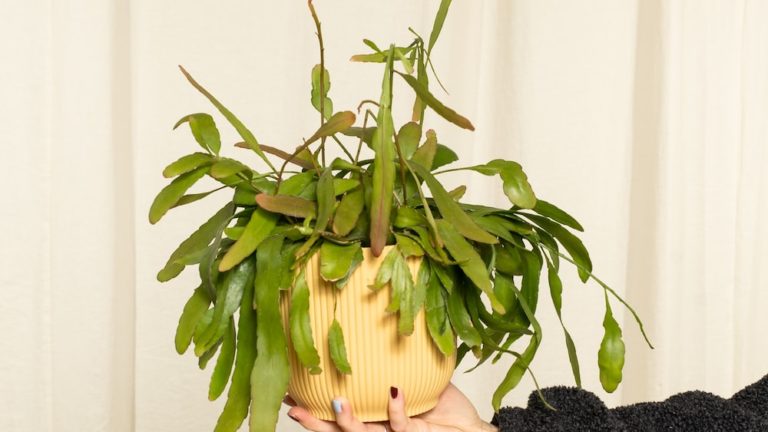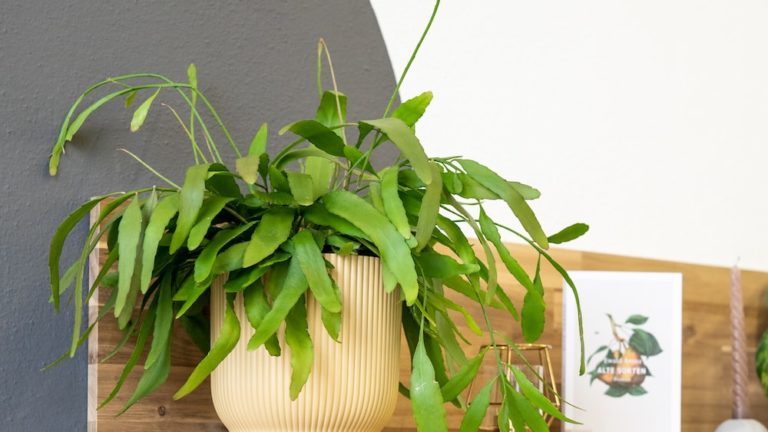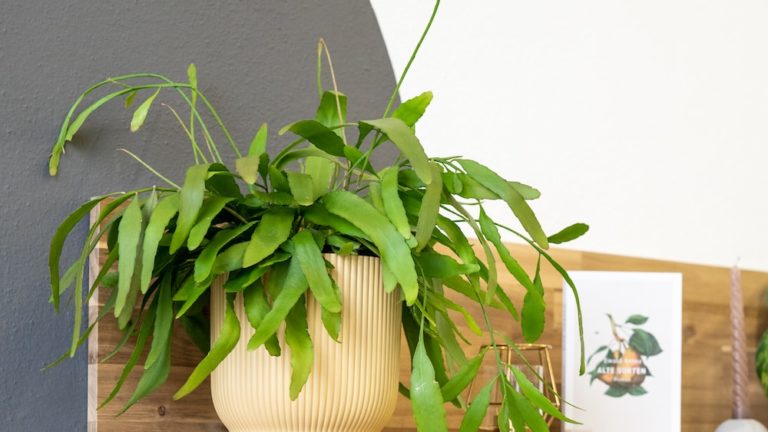Rhipsalis Vs Epiphyllum: Which Cactus Is Right For You?

Rhipsalis Vs Epiphyllum: Which Cactus Is Right For You?
Ah, dear reader, you and I share a passion for the natural world that doesn’t merely bloom – it thrives and resists, much like the unique world of cacti. When discussing about rhipsalis vs epiphyllum, there’s a certain whimsy that enthralls my heart. I fondly recall the morning sun casting ethereal shadows on my front porch, allowing glossy beams to dance over little spikes and colorful blooms. Indeed, through the lens of a cacti enthusiast, the world is carved in intriguing shapes and resolute structures.
The journey of understanding cacti is much like wandering through a desert, teeming with life steadfast against all odds, beckoning with its quiet beauty. As we delve into the nuances of rhipsalis and epiphyllum, brace yourself for an enriching journey marked by vivid imagery, mystic anecdotes, and profound insights.
How will you choose between these two marvelous species, you ask? Don’t worry, my friend, for what follows is a combination of heartfelt experiences and scientifically grounded facts. Our quest to determine which cactus is right for you will be a harmonious medley of emotions and knowledge, nurtured with a warm, intimate narrative.
Understanding Rhipsalis and Epiphyllum
As our exploration begins, it’s critical to understand the core of these two intriguing cacti. In dissecting the commonalities and disparities of rhipsalis vs epiphyllum, a deeper appreciation for their distinctiveness will undoubtedly emerge. Let’s illustrate them in vivid shades of green, teal, and the mesmerizing hues of their blooms – their unique features swaying rhythmically in our minds until their defining essence saturates our understanding.
What is Rhipsalis?
The charming Rhipsalis, my dear reader, is a species of cacti that greets you with a cascade of trailing succulent stems, almost as though it’s raining emerald drops. Floating above, you’d see a canopy of glossy leaves, and during flowering season, dainty white blooms emerge, adorning the foliage like tiny stars.
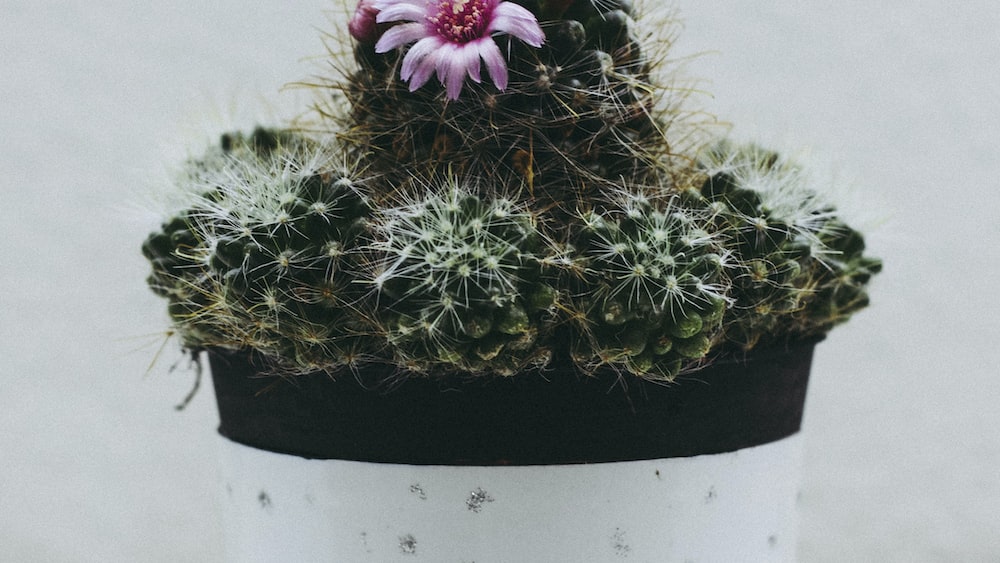
An astonishing fact about these cacti is that they are epiphytic, meaning they most naturally grow on trees in rainforests rather than typical desert cacti environments. Astoundingly, a 2010 study by Nyffeler and Eggli found that Rhipsalis baccifera is the only known species of cactus to naturally occur outside the New World. Undeniably, the resilient nature of Rhipsalis highlights both its unique charm and robust demeanor.
Try visualizing a cluster of lithe Rhipsalis swaying gently on a tree branch, its stems cascading like a waterfall – a sight to cherish, indeed. The sun’s warm embrace filters through the leafy canopy, casting fragmented rays on their glossy surface, amplifying their resplendent sheen. You can almost hear the whispers of the rainforest, hidden within the dense foliage, in the rustling of its long, draping stems.
Rhipsalis is a charming and resilient species of cacti that grows on trees in rainforests, with cascading succulent stems and glossy leaves adorned with delicate white blooms, making it a sight to cherish.
What is Epiphyllum?
The Epiphyllum, fondly referred to as the Orchid Cactus, wears an air of graceful elegance. When you feast your eyes on its splendid blooms, elaborate and stunning, you might forget for a moment that you stand before a cactus. Oh, my dear reader, the visual feast derived from their major league-flower-power is more transfixing than a desert sunset!
According to Britton and Rose’s New York Botanical Garden Study, these cacti bear magnificent flowers that are funnel-shaped, large, nocturnal – and breathtakingly vibrant. The softened glow of twilight stirs them into blossoming, painting the night air with their delicate fragrance.
Couple this spectacle with the alien-like beauty of their flattened leaf-cacti structure, and one might liken the Orchid Cactus to a sculptural masterpiece – an embodiment of naturess most whimsical imaginings. Immerse your senses in this spectacle, let the visual of orchid cactus care be your guide as you delve into the mesmerizing world of Epiphyllum.
Identifying Differences Between Rhipsalis and Epiphyllum
With our exploration underway, an aid in distinguishing between our two contestants – Rhipsalis and Epiphyllum – is a must. After all, knowing their differences will only make choosing between Rhipsalis vs Epiphyllum all the more personal and informed.
Physical Differences
Rhipsalis greets you with its delightful array of succulent trailing stems, casting a curtain of textured greenery. Its leaves are small, popping up along the elongated stems, creating a flourish of tiny spires. Amidst this emerald cascade, sits a discreet show of tiny and dainty flowers.
In stark contrast, Epiphyllum, the dazzling Orchid Cactus, captivates you with stunning, large flowers that set it apart gloriously from other cacti. The flower display is an annual spectacle, unprecedented in its lavishness, transforming the orchestrated cactus into a botanical showstopper. And let’s not forget their unique paddle-shaped leaves, yet another intriguing feature unique to the species.
Habitat and Growth Conditions
Let’s now gingerly step into their natural homes – their habitats. With a playful twist of scents and sights, their growth conditions tell us yet another intriguing tale of their existence.
Rhipsalis, native to the rainforests, thrives in a humid environment, swaying effortlessly on tree trunks or nestled amongst rocks. It favors the indirect sunlight filtering through the forest canopy, and nurturing it requires mimicking these conditions – an aspect we will delve with attention to detail in the forthcoming sections.
Epiphyllum prefers similar conditions – indirect light and generous humidity. But where it truly shines and showcases its full display of orchid cactus care is when twilight descends, with its blooms unfurling their resplendent charm under the muted glow of the evening star.
How to Grow Rhipsalis and Epiphyllum
Now that we’ve acquainted ourselves with Rhipsalis and Epiphyllum thoroughly, it’s time to introduce you to their unique growth and care needs. Like carefully nurturing a friendship, understanding their individual preferences will help us foster a reverential bond between humankind and these spectacularly resilient creatures of the plant kingdom.
Light, Water, Soil, and Temperature Needs for Rhipsalis
Let’s dive in and explore the needs of Rhipsalis, under the radiant sun adorning my garden. My enchanting Rhipsalis, lovingly known as mistletoe cactus, basks under the canopy of filtered sunlight. Contrary to most cacti, Rhipsalis prefers to take shelter from the scorching midday sun and thrive in a dappled light atmosphere.
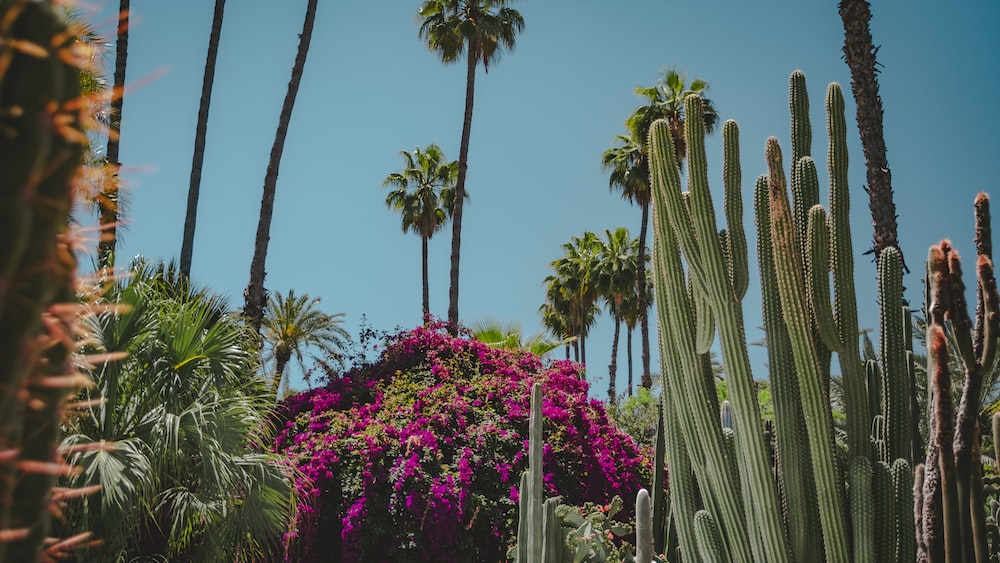
Watering these unique beauties requires an approach somewhat akin to a waltz with the seasons. During the growth phase in summer, timely hydration keeps their spirits soaring. However, don’t let their roots bask in stagnated water; consider using a well-draining pot and soil mix, like peat and pearlite. Once winter arrives, they ask for less, requiring watering just enough to keep the soil slightly moist.
The Rhipsalis, much like a child with a cool temperament, doesn’t ask for much in terms of temperature or soil nourishment. They are relatively fuss-free, preferring temperatures between 50-80 degrees Fahrenheit. As for soil, consider mixing a robust blend of organic compost or peat, supplemented with some pearlite or coarse sand for smooth drainage.
Rhipsalis, the mistletoe cactus, thrives in dappled light and requires well-draining soil with timely hydration during summer and slightly moist soil in winter.
Light, Water, Soil, and Temperature Needs for Epiphyllum
Turn your gaze now to the Epiphyllum, sometimes graced with the name Epiphyllum guatemalense monstrose.
As dawn surfaces and the morning sun sprinkles its golden rays, the Epiphyllum sings in harmony. The key, dear friends, is a balanced affair of light, avoiding both intense midday heat and constant dense shade. As the day wanes, they’re rather partial to a cool, balmy evening.
Just like their sibling, the Rhipsalis, Epiphyllum thirst varies with the seasons. In their active growth phase, water their soil generously, but they fancy a dry spell between waterings. A well-draining soil medium keeps them happy and thriving. Let their soil be a hearty mix of organic compost and sand, allowing smooth water run-off while nursing their nutrient needs.
Propagating Rhipsalis and Epiphyllum
Stepping into the world of propagation, I am reminded of my first propagation experience. As a little girl, I remembered seeing new life sprouting from a tiny cutting like magic. Friends, allow me to guide you through this magical journey of propagating Rhipsalis and Epiphyllum, our stars of the day.
Propagating Rhipsalis in Soil
Propagating Rhipsalis is like painting on a blank canvas, you follow your intuition. Begin by choosing a healthy stem cutting from the mother plant. Mindfully let it rest for a few days till the raw cut hardens forming a callus.
Once the callus is formed, find a small pot and fill it with free-draining soil. I prefer a mix of organic compost and pearlite, a combination that cradles the young cutting. Insert the cutting’s end into the soil gently, ensuring it stands upright.
Water lightly and place the pot in a location with filtered sunlight. Patience is key here, my friends. Regularly check the soil’s moisture and, before you know it, you will start to see new growth. Remember this journey is but a beautiful dance with Nature, so enjoy every step.
Propagating Epiphyllum in Soil
My first encounter with propagating an Epiphyllum was a dance of joy under the sun, a moment forever etched in my memory. This dance begins with selecting a healthy leaf cutting. Let it dry under the sun until it forms a callus at the cut end – quite similar to our previous Rhipsalis act.
Once ready, prepare a pot with a well-draining soil mix. Gently insert the callused end into the soil, pressing it around the base. Water sparingly in the initial stages, increasing as the cutting establishes. Maintaining a careful balance between hydration and aeration is crucial.
Don’t rush, my friends. It might take several weeks before you first notice roots forming. However, when your leaf cutting finally takes hold and new sprouts emerge, the sense of achievement and joy outweighs the anticipation!
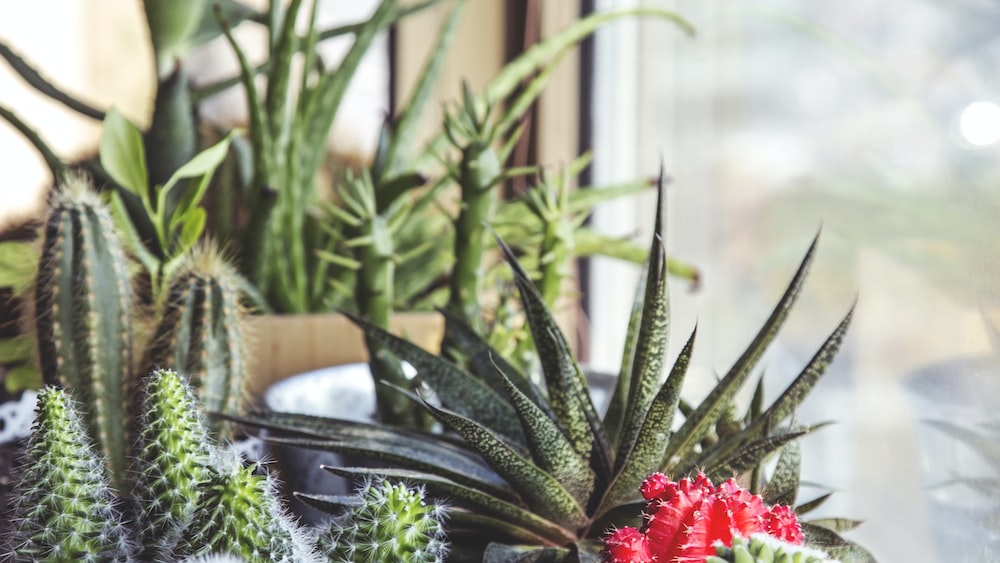
Propagating Rhipsalis in Water
For those of us who prefer the aquatic route, propagating Rhipsalis in water is an enchanting journey. Similar to soil propagation, start with a healthy stem cutting and let it callus.
Next, we take a different path. Fill a transparent glass with water and place the callused end into the water. Through the clear glass you can observe roots slowly emerging from the submerged section.
Remember to change the water every few days to avoid bacterial formation. Once a robust root system is established, it’s time to transition this budding plant into a pot with well-drained soil.
Propagating Rhipsalis in water is an enchanting journey, where you observe roots slowly emerging from a stem cutting submerged in a transparent glass filled with water before transitioning it into a pot with well-drained soil.
Propagating Epiphyllum in Water
The water propagation method can indeed be leveraged for the Epiphyllum as well, with the initial steps mimicking those of the Rhipsalis.
Take a healthy leaf cutting, allow it to form a callus, and then suspend it in a jar of water. Keep this setup in a bright, filtered light location but avoid direct sunlight.
Over time, visible roots will emerge from the submerged section. Once you see a healthy, significant root system, it’s time to transition your Epiphyllum cutting to a pot with well-drained soil and commence its new life in soil.
Rhipsalis Vs Epiphyllum: Which One is Right for You?
Now that we’ve walked hand in hand through the caring and propagation of both Rhipsalis and Epiphyllum, it’s time to reflect. Mindfully weigh the considerations for each, apply the knowledge and intuitions gained from our shared journey. Ask yourselves, “In the dance of ‘rhipsalis vs epiphyllum,’ which partner echoes my rhythm?”
Considerations for Choosing Rhipsalis
Before making what I affectionately refer to as a “prickly commitment,” there are several aspects to consider. Rhipsalis, often dubbed the “mistletoe cactus” due to its cascading, bead-like appearance, may catch your eye with its profusion of needle-free branchlets. When making your choice, remember that Rhipsalis thrives best in fairly bright but indirect light. Hence, an east-facing window sill, or a spot blessed with filtered midday sun would be a perfect home for this peculiar darling of the jungle cactus clan.
Rhipsalis are undemanding plants that don’t require a rigorous watering schedule. As epiphytes, they have adapted to the rainy and dry seasons of their natural habitats and thus, can tolerate water scarcity. Although they love a good misting, being careful not to leave them standing in water is crucial. Their fear of frost and preference for temperatures between 50-80°F, fit well with most indoor environments.
These fascinating cacti evoke a sense of exotic wilderness and are ideal if you are an experienced plant parent or a beginner with a finely tuned cacti radar. Moreover, Rhipsalis brings a unique texture into your indoor garden, with the gentle sway of its segmented branchlets creating a remarkable visual rhythm.
Considerations for Choosing Epiphyllum
On the other hand, if grand blossoms are your guilty botanical pleasure, look no further than the Epiphyllum. Commonly known as the “orchid cactus,” Epiphyllum produces magnificent, show-stopping flowers, turning your home into a flamboyant floral festival, if only for a moment.
Meanwhile, Epiphyllum requires a more tailored approach regarding its environmental needs. It has a heart for humid conditions and a longing for bright indirect light. A cozy bathroom or a kitchen nook with good airflow could be your Epiphyllum’s new home. Keep in mind, however, that they are no fans of the cold; anything below 10°C might spark a shiversome protest from your Epiphyllum.
FAQs
1. What are the main differences between Rhipsalis and Epiphyllum?
The key distinctions between Rhipsalis and Epiphyllum lie in their physical characteristics and care requirements. Rhipsalis is recognized by its needle-free, mistletoe-like segmented branchlets, while Epiphyllum boasts larger, often vividly colored foliage and showy blooms.
2. Can Rhipsalis and Epiphyllum be grown in the same conditions?
Though sharing the ‘jungle cactus’ lifestyle, Rhipsalis and Epiphyllum have slightly variant needs. While both prefer bright indirect light and temperatures above 50°F, Epiphyllum has a stronger fondness for humidity compared to Rhipsalis.
3. How do I propagate Rhipsalis and Epiphyllum?
Propagation of Rhipsalis and Epiphyllum can be achieved by cutting a segment from the parent plant, airing it out to form a callus, and then inserting it into well-draining soil. This process introduces a whole new level of excitement and creativity to your gardener’s journey.
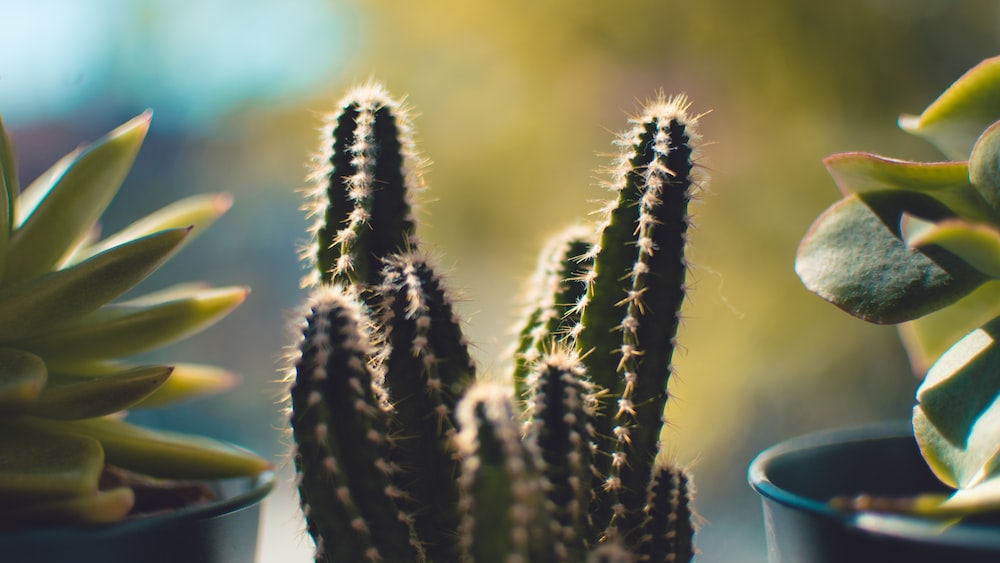
4. Which is easier to care for: Rhipsalis or Epiphyllum?
Ease of care between Rhipsalis and Epiphyllum largely depends on your living conditions and ability to meet their individual needs. Generally, Rhipsalis is less demanding, making it more suited to causal gardeners or those new to the realm of cacti.
Conclusion
And so, my dear readers, we’ve reached the end of our thorny journey, exploring the ups, downs, and all the prickly bits in between, of our lively discourse on “Rhipsalis vs Epiphyllum”. Whether you find yourself intrigued by the eccentric emerald fronds of the Rhipsalis or entranced by the theatrical blossoms of the Epiphyllum, bear in mind that each plant is an opportunity to deepen your connection with nature.
Remember, the best plant is the one that brings you joy, fits your lifestyle, and rhythm of care. I hope this exploration of Rhipsalis and Epiphyllum has not only provided practical knowledge but also offered an exciting peek into the wonderful realm of ‘jungle cacti.
Lastly, whether you inject your living space with the bead-like branchlets of a Rhipsalis or the grandeur of an Epiphyllum bloom, I’m sure your botanical choices will paint every corner of your home with the heartwarming colours of nature’s love song. So dear friends, may your fingers forever remain green, your curiosity forever bloom, and your soul forever find solace in the prickly, yet beautiful, embrace of the cacti world. Until our paths cross again in the broad, endless garden of prose, grow wild and free, like our friends, the cacti. This is Sophia, signing off!



